
|
Astronomy Picture Of the Day (APOD)
 Interstellar Comet 2I Borisov
Interstellar Comet 2I Borisov
13.12.2019
From somewhere else in the Milky Way galaxy, Comet 2I/Borisov is just visiting the Solar System. Discovered by Crimean amateur astronomer Gennady Borisov on August 30, 2019, the first known interstellar comet is captured in these two recent Hubble Space Telescope images.
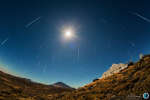 Full Moon Geminids
Full Moon Geminids
12.12.2019
The dependable annual Geminid meteor shower will be near its peak tonight (December 13/14) and before tomorrow's dawn. As Earth crosses through the dusty trail of active asteroid 3200 Phaethon the meteors will flash through the sky from the shower's radiant in Gemini.
 Decorating the Sky
Decorating the Sky
11.12.2019
Bright stars, clouds of dust and glowing nebulae decorate this cosmic scene, a skyscape just north of Orion's belt. Close to the plane of our Milky Way galaxy, the wide field view spans about 5.5 degrees. Striking bluish M78, a reflection nebula, is on the right.
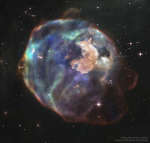 N63A: Supernova Remnant in Visible and X-ray
N63A: Supernova Remnant in Visible and X-ray
10.12.2019
What has this supernova left behind? As little as 2,000 years ago, light from a massive stellar explosion in the Large Magellanic Cloud (LMC) first reached planet Earth. The LMC is a close...
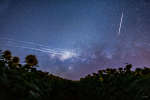 Starlink Satellite Trails over Brazil
Starlink Satellite Trails over Brazil
9.12.2019
What are those streaks over the horizon? New Starlink satellites reflecting sunlight. SpaceX launched 60 Starlink communication satellites in May and 60 more in November. These satellites and thousands more are planned by communications companies in the next few years that may make streaks like these relatively common.
 Looking Sideways from the Parker Solar Probe
Looking Sideways from the Parker Solar Probe
8.12.2019
Everybody sees the Sun. Nobody's been there. Starting in 2018 though, NASA launched the robotic Parker Solar Probe (PSP) to investigate regions near to the Sun for the first time. The PSP's looping orbit brings it yet closer to the Sun each time around -- every few months.
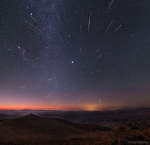 Geminid Meteors over Chile
Geminid Meteors over Chile
7.12.2019
Are meteors streaming out from a point in the sky? Yes, in a way. When the Earth crosses a stream of Sun-orbiting meteors, these meteors appear to come from the direction of the stream -- with the directional point called the radiant.
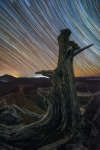 Lines of Time
Lines of Time
6.12.2019
In time stars trace lines through the night sky on a rotating planet. Taken over two hours or more, these digitally added consecutive exposures were made with a camera and wide angle lens fixed to a tripod near Orel farm, Primorsky Krai, Russia, planet Earth.
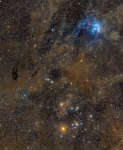 Pleiades to Hyades
Pleiades to Hyades
5.12.2019
This cosmic vista stretches almost 20 degrees from top to bottom, across the dusty constellation Taurus. It begins at the Pleiades and ends at the Hyades, two star clusters recognized since antiquity in Earth's night sky. At top, the compact Pleiades star cluster is about 400 light-years away.
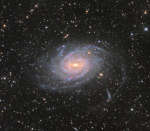 Spiral Galaxy NGC 6744
Spiral Galaxy NGC 6744
4.12.2019
Beautiful spiral galaxy NGC 6744 is nearly 175,000 light-years across, larger than our own Milky Way. It lies some 30 million light-years distant in the southern constellation Pavo and appears as only a faint, extended object in small telescopes.
|
January February March April May June July August September October November December |
||||||||||||||||||||||||||||||||||||||||||||||||||||||||